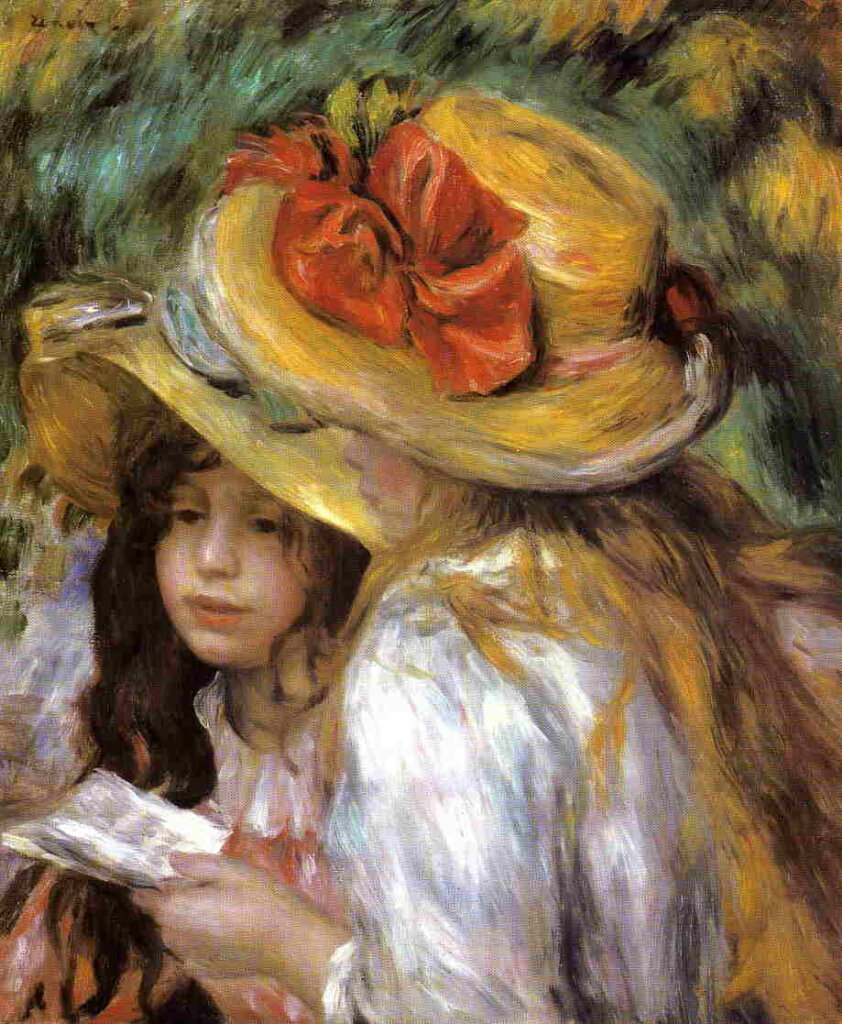
Did you know that poetry can be a tool for growing in faith?
In a world where information is delivered in soundbites, Instagram stories, and TikTok videos, you may be thinking: “Poetry? Why poetry?”
In an age where many articles tell you precisely how many minutes it’ll take you to read them, what need could we possibly have for spending periods of undetermined time with (supposedly) complex writing that’s so different from how we actually talk?
Here’s the truth.
Reading poetry is one of those activities that slows us down and invites us to live life more fully alive. It helps us truly engage with the world around us. Such an activity reorients us to the beauty of life—and even helps us grow in virtue.
As renowned writer Joseph Pearce puts it:
St. Thomas Aquinas shows us that humility is the beginning of wisdom because it is the necessary prerequisite for our eyes being opened to reality. One who has humility will have a sense of gratitude for his own existence and for the existence of all he sees. This gratitude enables him to see with the eyes of wonder. The eyes that see with wonder will be moved to contemplation on the goodness, truth and beauty of the reality they see. Such contemplation leads to the greatest fruit of perception, which is what St. Thomas calls dilatatio, the dilation of the mind. It is in this dilation, this opening of the mind to the depths of reality, which enables a person to live in communion with the fullness of goodness, truth and beauty.
Joseph Pearce, Poems Every Catholic Should Know

We all want to be more attuned to the truth, goodness, and beauty of our realities, right?
Poetry helps us do that. Poetry teaches us to “see with the eyes of wonder.” Poetry teaches us to contemplate truth, goodness, and beauty. It dilates the mind and leads us to contemplate God’s glory.
You may be wondering how to incorporate poetry into your life of faith.
Here are a few ideas, utilizing Catholic poetry.
1. Incorporate poetry into your liturgical fasts and feasts.

Allow poems to be part of your liturgical celebrations—of Lent and Advent, for example.
In Siegfried Sassoon’s “Lenten Illuminations,” we hear about the natural and personal transformation that occur during this season:
This is the time of year when, even for the old,
Youngness comes knocking on the door with undefined
Aches and announcements—blurred felicities foretold,
And (obvious utterance) wearying winter left behind.I never felt it more than now, when out beyond these safening walls
Sculptured with Stations of the Cross, spring confident, unburdened, bold,
The first March blackbird overheard to forward vision flutes and calls.
What a different approach to this solemn season! Where I might be tempted to pair ideas of Lent with disciplines too difficult for me to carry out, Sassoon invites me to observe the freedom and growth that Lent (which means “spring”) calls me to. It’s certainly a season of perseverance, but this perseverance is more like a butterfly emerging from a chrysalis or a seed breaking through the soil. It calls me upward.
Consider also incorporating poetry into your Christmas practices. William Dunbar’s “On the Nativity of Christ” is a lovely poem to feast your eyes and ears upon on Christmas Eve:
Rorate coeli desuper!
Heavens, distil your balmy showers!
For now is risen the bright day-star,
From the rose Mary, flower of flowers:
The clear Son, whom no cloud devours,
Surmounting Phoebus in the East,
Is coming off his heavenly towers:
Et nobis Puer natus est.
How vivid and glorious the scene of Christ’s coming in this early 16th-century poem. What a call to celebration!
2. Cultivate poetic traditions around the saints’ feast days.

Until reading Joseph Pearce’s book, I didn’t realize how many poems have been inspired by the saints.
You may be familiar with Alexandra Greeley and Fernando Flores’ Cooking with the Saints, where saint feast days are paired with recipes connected to the saint’s life. Why not also start the tradition of reading a poem about a saint on his or her feast day?
For example, on July 22, consider reading George MacDonald’s “Mary Magdalene.”

From just a couple of the stanzas in this poem, you can already taste the richness:
With wandering eyes and aimless zeal
She hither, thither goes;
Her speech, her motions, all reveal
A mind without repose…Run Mary! lift thy heavenly voice;
Cry, cry and heed not how;
Make all the new-risen world rejoice—
It’s first apostle thou!
This poem opens a conversation about the transforming, healing power of Jesus. Mary Magdalene’s zeal, when reoriented toward love of Christ, makes her bold in seeking Him, even during his Passion and after His Resurrection. Her tenacity is something we all can learn from.
Honoring St. Agnes, Alfred Lord Tennyson’s “St Agnes’ Eve” calls us to deeper devotion. Tennyson infuses this January feast with breath and life, inviting us to both meditate on what could be St. Agnes’ prayer and our own:
Deep on the convent roof, the snows
Are sparkling to the moon:
My breath to heaven like vapor goes:
May my soul follow soon!
The shadows of the convent-towers
Slant down the snowy sward,
Still creeping with the creeping hours
That lead me to the Lord:
Make Thou my spirit pure and clear
As are the frosty skies,
Or this first snowdrop of the year
That in my bosom lies.
The meter and rhyme that guide this poem make it especially memorizable. And Tennyson’s rendering of winter as a mirror for the spiritual life is exquisite.
3. Allow poetry to deepen your appreciation for nature.

According to the Catechism, God’s creation mirrors Him (CCC 341).
It’s no wonder that the natural world figures into the work of so many poets. In Samuel Taylor Coleridge’s “To Nature,” the speaker notices God in the simple and small details of the natural world:
It may indeed be phantasy when I
Essay to draw from all created things
Deep, heartfelt, inward joy that closely clings;
And trace in leaves and flowers that round me lie
Lessons of love and earnest piety.
One of the things I enjoy about this poem is that it draws the speaker to embrace the priestly role of our calling to be priest, prophet, and king (see CCC 783):
And the sweet fragrance that the wild flower yields
Shall be the incense I will yield to Thee,
Thee only God! and thou shalt not despise
Even me, the priest of this poor sacrifice.

How beautiful to bring to God the little delights and the smallest details of our day. The call here is to notice the “deep, heartfelt, inward joy,” found in these “lessons of love.”
And lest our lessons of love end with nature, Gerard Manley Hopkins’ “As Kingfishers Catch Fire” reminds us of the beauty of our fellow human beings:
…for Christ plays in ten thousand places,
Lovely in limbs, and lovely in eyes not his
To the Father through the features of men’s faces.
4. Pray with poetry.

Consider bringing poetry to your daily prayer time.
Select a stanza and, as you do with lectio divina, consider what words and phrases speak to you in the poem.
You may decide to pray poetry aloud in a group, which allows both for hearing poetry (a much different experience from reading it silently) and for the insight of multiple people to unfold the poem further. A poem like Francis Thompson’s “Hound of Heaven” may be a great selection to read in a group for its themes of human restlessness and God’s constancy. The speaker’s feelings are certainly relatable:
I fled Him, down the nights and down the days;
I fled Him, down the arches of the years;
I fled Him, down the labyrinthine ways
Of my own mind; and in the mist of tears
I hid from Him, and under running laughter…From those strong Feet that followed, followed after.
But with unhurrying chase,
And unperturbèd pace,
Deliberate speed, majestic instancy,
They beat—and a Voice beat
More instant than the Feet—
‘All things betray thee, who betrayest Me.’
Unlike the fleeing speaker, Jesus’ pace is gentle; he follows “with unhurrying chase, / And unperturbed pace, / Deliberate speed, majestic intimacy,” which eventually wins the speaker’s heart.

George Herbert’s “The Pulley” also meditates on human restlessness, perceiving it as a gift that can lead to intimacy with God:
Yet let him keep the rest,
But keep them with repining restlessness:
Let him be rich and weary, that at least,
If goodness lead him not, yet weariness
May toss him to my breast.
With its compact format and focused subject matter, poetry can be an incredible accompaniment to prayer.
5. Play with poetry.

Good poetry is meant to be read aloud, to be shared.
Not only does it foster community: Joseph Pearce would say it forges connections that are more real, more meaningful, than activities that divide our attention from others.
So, don’t be afraid to play with poetry. Invite friends over and trade off reading stanzas together. Memorize poetry, both for your own enjoyment and for the enjoyment of others.
And, if you feel so inspired, try your hand at it. It can be as simple as writing a short note of gratitude to the Lord each night, incorporating details that involve the five senses. Rhyme and meter aren’t strictly necessary, but if you like them, definitely try them.
Poetry is a special lifting of the heart to God. It invites us into wonder, into the extraordinary of life, to “taste and see that the Lord is good” (Psalm 34:9) and abundant in His inspirations.
Let the journey begin!
Does poetry intimidate you? Why do you believe this is?
Have you considered finding a favorite poet to encourage your poetic reading? St. John of the Cross and St. Thérèse of Lisieux were both poets. You could also start with classic poets such as Robert Frost and Emily Dickinson.
Share your thoughts on this article with us in the comments below!





